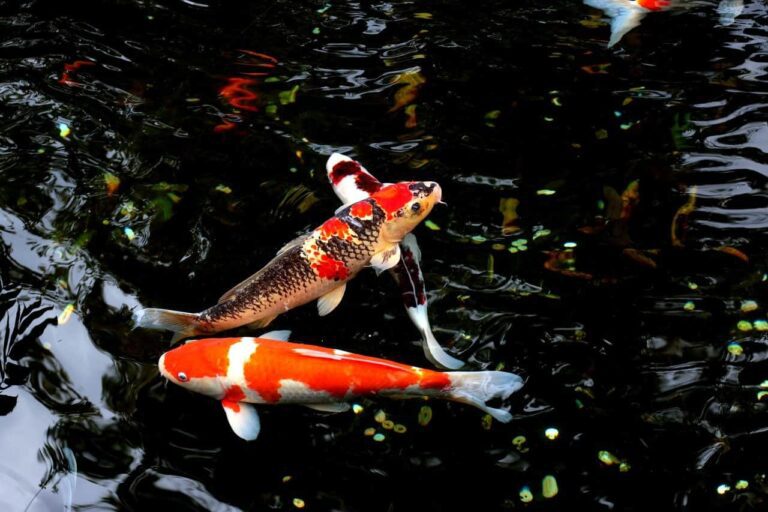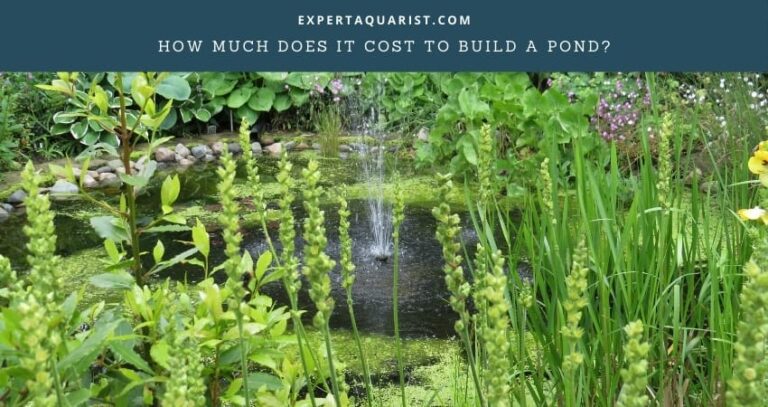Incorporating a garden water feature transforms it from basic to breathtaking. Besides, some features are not only decorative but also functional. For example, waterfalls and fountains can help aerate the water and provide a calming ambiance.
There are a variety of pond water features to choose from. This article will discuss the various types of pond water features and the factors to consider to choose the right options.

Types of Pond Water Features
Pondless Waterfalls
Pondless waterfalls are some of the most sought-after water features. There are a variety of designs and sizes to choose from depending on how large or small your pond and outdoor landscape are.
You could go for one that produces a soft babbling sound over the rocks or the more dramatic one with a longer drop. Some come as easy-to-install DIY kits, while others require a professional to install.
Waterfalls are easy to maintain and energy efficient. They are also beautiful sights to behold and produce soothing sounds. A pondless waterfall also helps to recirculate water in the pond, which promotes a healthy ecosystem and inhibits excessive algae growth. They are a great option for koi ponds.
Fountains
Fountains are another great water feature option for ponds. Like pondless waterfalls, they are available in various sizes and designs. However, unlike waterfalls, they are less expensive to buy and install.
A water fountain adds a splash of water to your backyard and pond. You can use fountain rocks to create a rustic appeal or urns for more elegance.
Get a DIY kit with all the necessary parts and installation instructions for easy installation of your new water fountain. You can also purchase the components separately and then install them in your pond. The key when buying components separately is to ensure that they are compatible. For example, the water pump’s specs fit those of the other components.
Splitters
Pond splitters add vibrancy to your water pond. They come in a wide range of materials, styles, and designs. A splitter can take many forms, including a human, animal, building, or dragon statue. Typically, the bigger ones are made of concrete, while the smaller ones are made of non-toxic plastic or resin. A few splitters are wooden.
They are attached to a pump that pushes the water upwards and into the pond. Splitters create a more distinct column of water. They boost surface water flow and movement, consequently boosting aeration.
Water Garden
A water garden enables you to incorporate aquatic plants into your pond. It can be incorporated in different types and sizes of ponds, including koi, concrete, earthen, fiberglass, and plastic. However, consider the depth of the pond and the type of fish in it when choosing aquatic plants.
You can incorporate plants within the pond or around the pond. Different varieties of pond plants can be broadly categorized into rooted plants, floating plants, or submerged plants. The bigger your water garden, the more plants and the wider variety you can incorporate.
For rooted plants, you will need to add soil up t at least 1 foot to hold the plants. You will also need to add compost to provide nutrients and support plant growth. Some of the best pond plants include creeping jenny, water lettuce, mosaic, blue iris, sweet flag, Calla lily, etc.
Stream
A stream is a unique water feature you can incorporate into your pond. It is visually appealing, and the flowing water produces a calming sound. If you find the water sound from a waterfall too loud, a stream is quieter, making it a better option.
You can create a stream to or from the pond. If you have multiple ponds, you can set it up to connect the ponds. Adhere to the topography of your backyard to create a free flow of water. Although it is possible to create any topography, it is best to work with the natural topography as-is and only enhance it.
You will need to construct a frame for the stream and set up a compact bed for water to flow on without carrying dirt. You may leave the bed open and cover it with a liner. Then, lay stones and rocks on the bed to enhance the aesthetics of the stream.

Factors to Consider When Choosing a Pond Water Feature
Size of the Pond
You can set up multiple water features if you have a large pond. For example, you can have a waterfall or fountain and a spitter or multiple spitters. However, for smaller spaces, go for pond water features that take up minimal space, such as small fountains or a few small water pond plants.
Budget
Some pond water features are more expensive to set up and maintain than others. For example, waterfalls are generally more expensive than fountains. Aquatic plants are a great and inexpensive option for sprucing up your pond.
Type of Fish
The type of water features you choose should be compatible with the fish in the pond or those you intend to keep. If you are just setting up the pond, start by establishing the type of fish you would like to keep.
Determine the required water parameters for the fish and how incorporating various water features in the pond would affect them. For example, while a waterfall improves water circulation, it causes agitation in the water, which can be distressing to the fish.
Conclusion
A water feature should improve the aesthetics of your backyard and pond. It should also support aquatic life. When choosing a suitable pond water feature, consider your budget, preferred design, installation location, and the type of fish you have or intend to keep.






